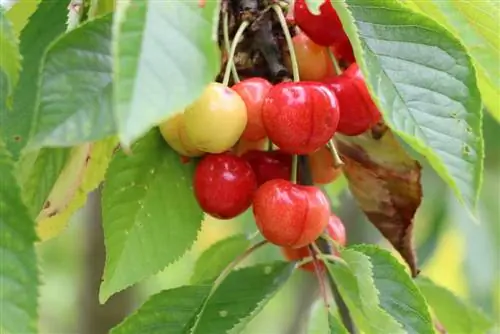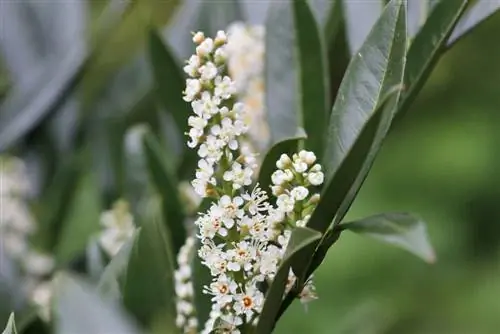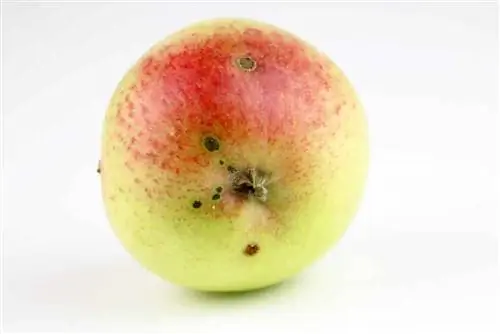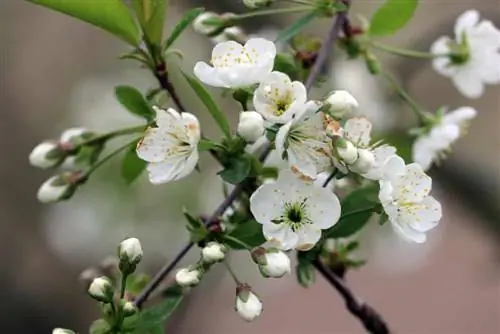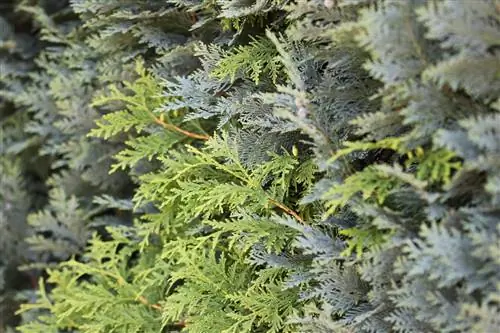- Author admin [email protected].
- Public 2023-12-17 03:39.
- Last modified 2025-01-24 12:45.
Fresh fruit from your own garden - hardly a garden owner doesn't dream of it. It's just a shame that conventional fruit trees require so much space and grow so tall. Many a garden is clearly overwhelmed by this. Fortunately, there are also smaller varieties called half-stems that take up less space and can still lead to a rich harvest every year.
Half-trunks
The term half-stem refers to the cultivation form of fruit trees. Basically, three types of cultivation can be distinguished - standard trunks, half trunks and bushes. Each represents a different size. For example, while the crown of a fruit tree in a standard tree only begins at a height of 180 to 220 centimeters, the crown base of a half-trunk is already at a height of between 100 and 160 centimeters. In other words: half-stems have a shorter stature. At the same time, the tree's yield is surprisingly high. The advantages are obvious: the fruit tree requires less space, is easier to harvest thanks to its low height and still produces lots of fruit.
Tip:
If even half-stems are too high for you, you can also use varieties that belong to the subcategory of low-strains. In their case, the crown begins at a height of 80 to 100 centimeters.
Location
Half-trunks differ from their larger brothers in their lower stature and slightly less pronounced crowns. However, they are practically identical in terms of the requirements they place on their location. The same applies to cherry and apple trees as to most other fruit trees: the location must be as sunny as possible. This means that the tree can, if possible, be flooded with sun or light from all sides. Consequently, he needs enough space around him. Another tree planted too close can become a problem, as can a house wall. There must always be enough space so that the crown of the tree can unfold freely and in all directions.
Planting spacing
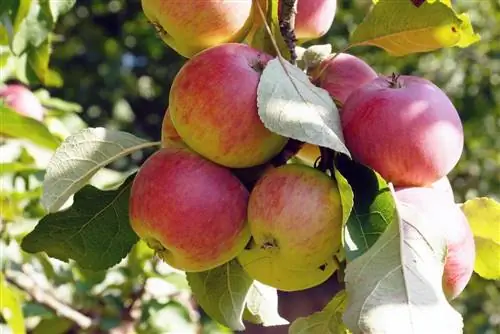
The planting distance is practically identical for tall and half trunks. They only differ marginally in the volumes of their crowns. However, the distances differ from type of fruit to type of fruit. The following distances must be observed when planting young trees:
- Apple tree: six to ten meters
- Pear tree: five to seven meters
- Plum tree: three to five meters
- Sweet cherry tree: four to seven meters
- Sour cherry tree: three to five meters
- Peach tree: three to four meters
These distances should not only be maintained from other trees, but also from buildings and terraces. It is always important to keep in mind that the crowns of fruit trees that were grown as half-trunks also cast a lot of shade and quickly get in the way of a sun-drenched terrace. By the way, this is especially true for cherry trees.
Planting
The young trees to be planted should be two to three years old. The best place to get them is from a tree nursery. Before planting, the root ball is watered well for several hours by placing it in a large container of water. If the tree nursery has wrapped the bale with fabric, this wrapping must of course be removed beforehand. When planting yourself, proceed as follows:
- Dig a planting hole in a size of half a cubic meter to one cubic meter
- loose the bottom of the hole well
- mix the excavated soil well with ripe compost and clay (proportions: one third each)
- Carefully place the root ball in the planting hole
- fill the hole with the enriched soil
- water immediately after planting
Although fruit trees can generally be planted in spring, the best time to plant them is autumn (October). If there are damaged or dried roots in the root ball, they must either be carefully removed or, even better, cut before planting. It is recommended to place a so-called tree post on the side of the newly planted tree. This gives it additional stability. However, the post must not protrude into the crown. The distance between the trunk and the post should be five to eight centimeters. It is also important to note that the young tree must not be fertilized when planting.
Care

Fruit trees generally require very little care. Of course, this also applies to half-tribes. For adult trees you can usually avoid watering. Only during the growing period after planting should you water regularly with plenty of water. In the first four years of the tree's life, watering should be carried out in summer when it is very dry. Otherwise you can safely do without it. The trees are only fertilized in spring (March or April) and never in autumn. Fruit tree fertilizer from specialist retailers is ideal for this. Under no circumstances should blue grain be used when fertilizing. If the tree was planted in spring, it should not be carefully fertilized for the first time until the following year.
Cut
Pruning is of particular importance for all fruit trees. On the one hand, it serves to build the crown as a stable framework that can easily withstand strong winds and a large snow load. On the other hand, the cut should also promote growth and ensure the highest possible yield. Cutting takes place from the first year of planting. For trees that come from a tree nursery, however, this first pruning can be dispensed with as they have usually already been brought into good shape. However, they should also be thinned out a little and the existing shoots shortened. Half trunks should definitely be cut annually. The best time for this is the winter months of January to mid-March. Exception: Cherry half trunks are cut immediately after the harvest in summer.
Note:
Since the crowns of apple trees grow very heavily, even with half-trunk cultivation, they must be thinned out once a year. With cherry trees, on the other hand, you can save yourself the annual pruning and choose a rhythm of two to three years.
Diseases and pests
Half-stems are generally threatened by the same diseases and pests as standard stems. What is particularly dangerous for the tree is the infestation of the small and large frost moth, the leaf bug and, in the case of apple trees, especially the codling moth. If an infestation occurs, action should be taken immediately. As a rule, biologically based plant protection products from specialist retailers help. But you can also take preventive action with a few simple tricks. For example, cardboard wrapped around the entire length of the trunk helps against the dreaded codling moth. The animal's caterpillars can then no longer climb up. Glue rings that are attached to the trunk help against frostbite. Nesting boxes for birds that are hung in trees are also recommended. The pests are the ideal food for them.
Harvest
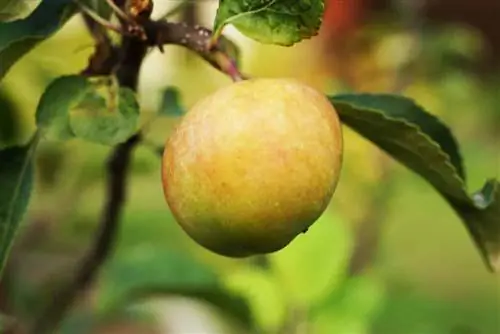
If everything goes normally and the tree has been pruned well, you can expect the first harvest around three to four years after planting. The yield is of course much lower than with a much older tree. The harvest yields also always depend on the weather conditions. The fruits are harvested when they are ripe in summer or late summer. A ladder will also be required when harvesting half-trunks. However, this can be far less long than for harvesting tall stems.
Wintering
As with all fruit trees in our latitudes, the same applies to half-stem varieties: the trees are hardy. Overwintering is therefore neither necessary nor possible. A thick layer of mulch, which is applied to the root area in autumn, can only be useful for freshly planted and very young trees.

